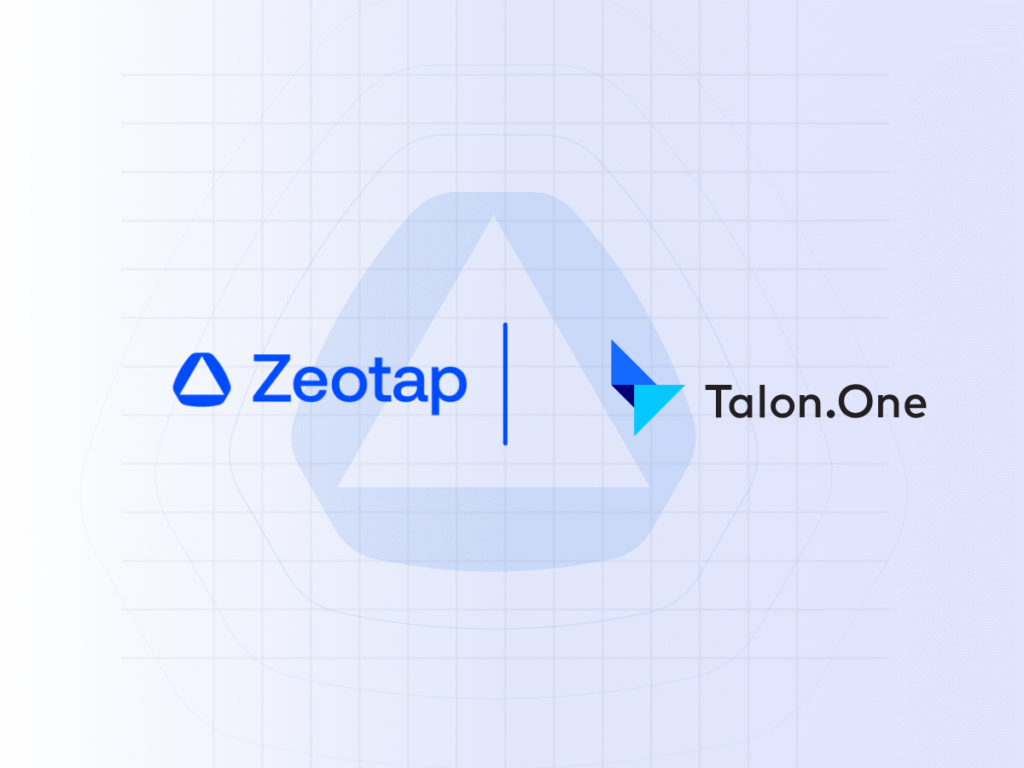
Customer data is all around us, and if businesses take the time to collect it, analyse it and activate it, the opportunities are huge.
However, to get value out of data you need to know what you’re dealing with, and the term ‘customer data’ masks a new whole lexicon to get to grips with: zero-party, first-party, second-party and third-party.
It’s a confusing new landscape for many, and so in this article, we’ll set out a guide to what types of data are out there, what they’re good for and how you can use them.
What is customer data? A quick definition
When businesses talk about customer data, they’re referring to any information that they have about their customers. This can include anything from contact details and demographics to purchase history and cookie preferences.
We can already see that this term is a ‘broad church’ – so broad that it’s almost meaningless!
Different types of data are collected in varying ways and serve very different purposes – and in a privacy-first world, are subject to variable restrictions when it comes to how they should be stored and protected.
So the important next step is to break down ‘customer data’ into its key different types…
Customer Data Types
First-Party Data
First-party data is information that is collected by a company about its own customers, prospects and website visitors.
This data is typically collected through analytics tools (app or website), your CRM system, subscription-based email marketing, social media and surveys. The data often includes information such as names, addresses, email addresses, phone numbers, and other Personally Identifiable Information (PII – more on this later).
The applications of first-party data are broad: marketing, product development and customer service can all use first-party data to better inform and optimise their efforts (provided that they can easily access and manipulate it).
First-party data is considered to be the most valuable type of data not only because it generally is the most accurate, but also because it’s ‘owned’ fully by the business.
This means that there can be full transparency on where and how data was collected and – even more importantly – the opportunity to ensure that consent and preferences for the use of that data have been properly collected.
In today’s market, first-party data is an essential asset for any company that wants to compete – especially with the cookieless future looming on the horizon in 2023.
Second-party data
Second-party data is data that is collected by one organisation and then sold or shared with another organisation. This type of data is often shared in order to improve targeted marketing efforts.
For example, a clothing retailer might share second-party data with a shoe manufacturer in order to better understand which products their customers are interested in.
Second-party data can be very valuable, as it can provide vital insights into a company’s customers or target market.
However, the fact that it comes from a partner means that there’s a critical level of trust in play – not only that the data is of good quality, but that it’s been collected with sufficient user consent to be shared with an external party.
Third-Party Data
Third-party data is the data that’s collected and sold by an entity that doesn’t interact directly with either the subject of the data (i.e. the consumer) or the buyer of that data (i.e. the business).
Third-party data is most familiarly found in data marketplaces or exchanges, where data from multiple sources is aggregated and then sold programmatically in larger datasets.
Most commonly, this data is bought in segments based on key attributes such as audience characteristics or behaviours – for example, ‘high net worth individuals’ or ‘football fans’.
Third-party data does come with caveats however: whilst it can be extremely valuable, it also raises some privacy concerns. Because the individuals whose data is being collected are not always aware that it is being collected or how it will be used, there is a risk that their privacy could be violated.
Additionally, because third party data is not created or controlled by the company using it, there is always the risk that it may not be accurate or up-to-date. As a result, companies and organisations must be transparent about their policies regarding third-party data and seek out providers that are equally as transparent about their ability to ensure user consent.
Zeotap Fuel is one such example, having been created to serve the needs of European advertisers operating under GDPR.
Having said this, third party data remains a valuable asset for companies, providing insights that can be used to make better decisions about everything from marketing to product development.
Zero-party data
Zero-party data is a relatively new concept in the world of data privacy. Unlike first-party data, which is any data collected by a company about its own customers, zero-party data is intentionally and proactively shared by consumers themselves. This could include information like marketing preferences, purchase history, and even contact information.
The idea is that by proactively sharing this data with companies, consumers can have a more personalised and frictionless shopping experience. As a result, zero-party data can help to improve customer loyalty and retention rates.
This makes zero-party data incredibly valuable to companies because it provides a more complete picture of the customer than just traditional first-party data, and in the age of data privacy concerns, zero-party data provides a way for companies to collect valuable information while still respecting the rights of their customers.
What are the 4 types of customer data?
Now that we understand the different data groups, it’s easier to determine which types of customer data commonly fall into one of those four categories.
1. Personal Data (Personally Identifiable Information, PII)
Personal data is any information that can be used to identify an individual. This includes obvious things like name and address, but can also include less obvious information like date of birth, biometric data, or online activity.
Personally identifiable information (PII) is a subset of personal data that can be used on its own or in combination with other information to identify an individual. Common examples of PII include email addresses, phone numbers, Social Security or National Insurance numbers, driver’s licence numbers, and passport numbers.
Given the vast amount of personal data that is now collected and stored online, it’s important to understand the differences between personal data and PII. Otherwise, you run the risk of unintentionally sharing sensitive information that could be used to exploit your identity.
Examples of personal customer data include:
Personally Identifiable Information (PII) is commonly divided into two categories:
Linked Information:
Linked information is data that can be used to identify an individual without requiring any additional information or data points.
Examples include:
- Full names
- Physical addresses
- Email addresses
- Login details
- Driver’s licence numbers
- Passport numbers
- Credit/debit card details
- Dates of birth
- Phone numbers
Linkable Information:
Linkable information is data that won’t identify a person alone, but will when it’s combined, or matched, with another piece of information. Examples of linkable information include:
- First or last names
- Locations, like country, town, city, or postcodes
- Gender preferences
- Race and ethnicity information
- Age group
- Job details
2. Engagement Data
Engagement data refers to the information collected about how people interact with content on a website or app. This data can include things like how long users spend on a particular page or feature, what actions they take, what they scroll past, and what kind of feedback they provide.
Engagement data can be used to understand how well a product or service is being received, identify areas for improvement, and track changes over time. It can also be used to assess the success of marketing campaigns and to determine which content is most popular with readers.
In short, engagement data provides valuable insights into how people interact with and feel about a digital product or service.
Examples of engagement customer data include:
- Website and app interactions like website visits, most viewed pages, navigational flow
- Social media engagement, like the number of likes, shares or comments a post receives, as well as native video views
- Email engagement rates like open rates, click-through rates, bounce rates
- Customer service information such as the number of tickets raised, the complaint or query details or customer feedback given
- Paid ad engagement information, such as the number of impressions, the click-through rate, the cost per click and conversions
3. Behavioural Data
Behavioural data refers to the data that’s collected about people’s behaviour with respect to a product or service. For example, patterns in checkout abandonment would be one type of behavioural data, as would repurchase frequency or subscription renewal.
Behavioural data is incredibly valuable to businesses for a number of reasons:
- Behavioural data helps with audience segmentation as it can be used to craft personalised communications (like sending cart abandonment emails).
- Behavioural data helps brands identify customers at risk of being lost, as well as those that have the most value
- Behavioural data can give insight into what people are interested in and how they make purchase decisions, as well as provide valuable information regarding how users interact with a product.
By understanding behavioural data, businesses can optimise their offerings to better meet the needs of their customers.
Examples of behavioural customer data
- Transactional Data, such as subscription details, purchase details, previous purchases, the average order value, cart abandonment data, average customer lifetime value, customer loyalty program details, etc.
- Product Usage data, such as device usage, repeated actions, feature usage, feature duration, task completion
- Qualitative Data, like user attention or scrolls and mouse movement data taken from heatmaps.
4. Attitudinal Data
Attitudinal data gets to the core of what makes customers tick. Motivations, opinions, preferences, and attitudes are all examples of this sort of data.
Customer data of this type adds depth to customer profiles and, when used well, provides customers with a sense of being perceived by a company.
Attitudinal data is typically acquired by businesses through things like customer interviews, feedback reviews, and questionnaires. But businesses must ensure they ask the proper questions in the right manner in order for them to get high-quality attitudinal data.
Attitudinal data is just as important as behavioural or engagement data when it comes to customer profiles, as it can add depth to a customer. For example, a company may learn that its customers are loyal because of a cause it supports, rather than because of the price or even the quality of its products, or they may discover that their consumers are strongly attached to one specific product feature that they would not have considered otherwise.
Example of attitudinal customer data
- Customer satisfaction
- Sentiments
- Product desirability
- Preferences
- Motivations and challenges
- Purchase criteria
Managing Customer Data
How To Collect Customer Data
Customer data can be collected in a number of ways, including surveys, customer feedback forms, and website analytics.
This information can help you better understand your target market, assess customer satisfaction, and make informed decisions about marketing and product development. There are a number of different ways to collect customer data but one of the best ways is to use a Customer Data Platform (CDP).
CDPs collect information from a variety of sources, including websites, mobile applications and customer relationship management systems (CRMs). Data is collected using methods like application programming interfaces (APIs), event trackers (e.g. JavaScript tags and SDKs), server-to-server integrations, and manual imports.
Once the data from any one of these sources is collected, a CDP then helps you to unify all of your disparate data and improve its quality of it through a process of matching, standardisation and validation.
Using Zeotap’s CDP, attributes of the same user are unified and then linked together through a unique ID by applying a classification scheme to the data labels of your multiple sources.
This results in the creation of a comprehensive single customer view, which we call the Trusted Golden Record.
How To Unify Customer Data
There are many benefits to unifying customer data, but many businesses struggle with the process of doing so. This can happen for a number of reasons, but often it’s because businesses are using multiple software platforms that don’t talk to each other.
As a result, customer data ends up being scattered across different departments and silos within the company. This makes it difficult to get a complete picture of the customer journey touchpoints and results in a lot of duplicate and inaccurate data.
But by creating a single source of truth for customer data, businesses can improve efficiency, gain insights into customer behaviour, and create a more cohesive customer experience.
Using a CDP to collect data from as many sources as possible is a great start, but one of the most critical functions of a Customer Data Platform is a solid process for resolving identity into a single customer view.
At Zeotap, we have both. Zeotap CDP allows you to construct your own private identity graph using two types of identification: Customer Merge and Customer Distinction.
Our Customer Merge approach links any data about a customer to identify them. For example, linking all of an anonymous user’s activities together with their logged-in activity.
Meanwhile, our Customer Distinction approach entails using deterministic, primary identifiers to identify a customer, ensuring that data quality is improved as user behaviour is linked based on greater-quality identifiers.
Together this creates a cross-channel and cross-device Trusted Golden Record of each customer that includes both offline and online data using identifiers matched across different devices and touchpoints.
How To Activate Customer Data
Activating customer data is a crucial step in developing targeted marketing campaigns. By understanding who your customers are and what they need, you can create messages that resonate and deliver real results.
But customer data activation can be a challenge, especially if you don’t have the right tools or expertise.
There are many different ways to activate customer data, from customer segmentation to personalised messaging. Segmentation involves grouping different customers based on either demographic, behavioural, engagement or attitudinal data types.
Targeted campaigns can then be created based on those user segments – for example, a product aimed at a specific demographic. However, the set-up of these campaigns can be costly from a time perspective.
Using a CDP is one way to make the process more efficient by sending customer segments to multiple integrated platforms for social, marketing and advertising campaigns where they can be activated in conjunction with analytics tools to better measure the ROI.
Conclusion
Understanding the many sorts of consumer data enables companies to convert their insights into meaningful interactions. For businesses of all shapes and sizes, data should be the lifeblood of decisions. If you’re just thinking of or wondering how to start a business to successful eCommerce start ups, to fortune 500 companies data needs to be collected, analyzed and activated effectively.
Customer data platforms have emerged as a sophisticated approach for combining and reconciling all of a company’s customer information, which is then used to generate a complete 360 customer profile. As a result, the data’s value increases dramatically.
If you’re ready to harness the value and power of your data, you need Zeotap’s industry leading CDP. Request your free demo.





